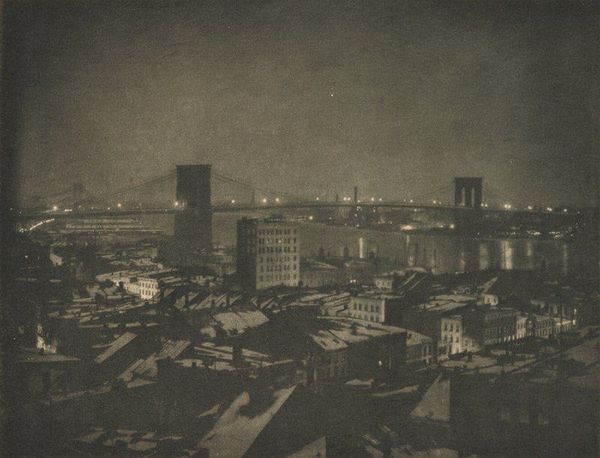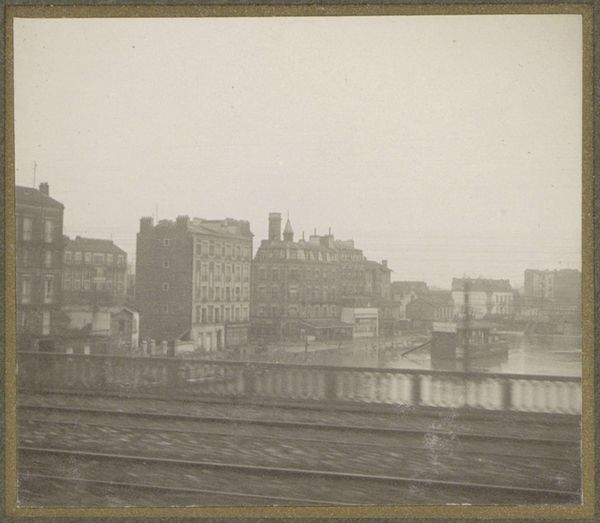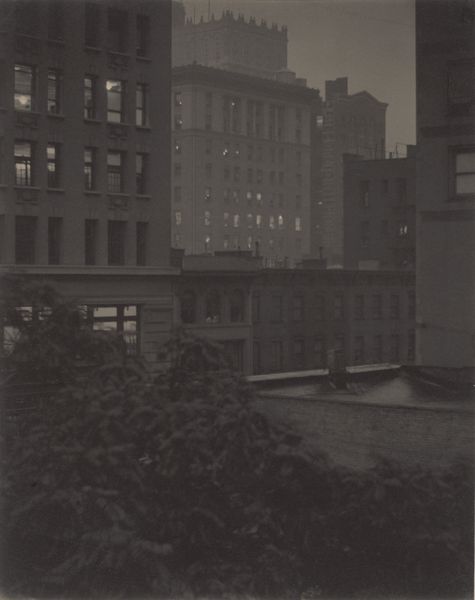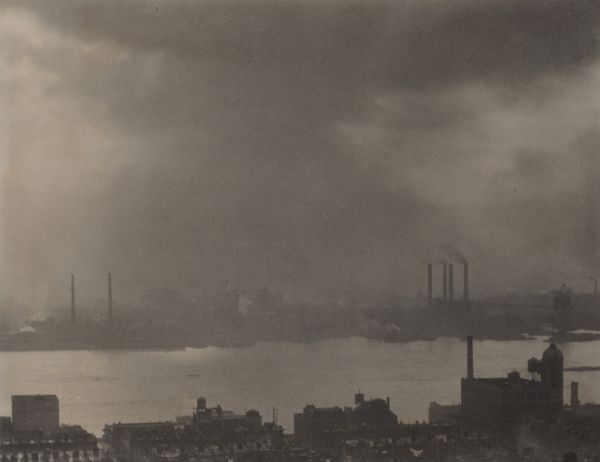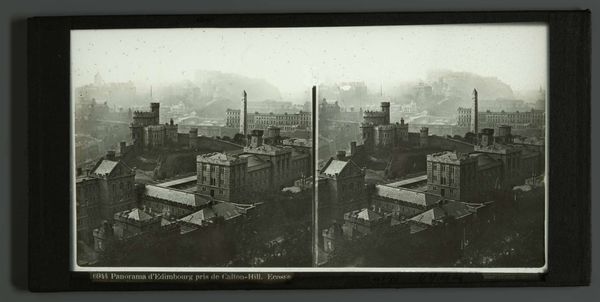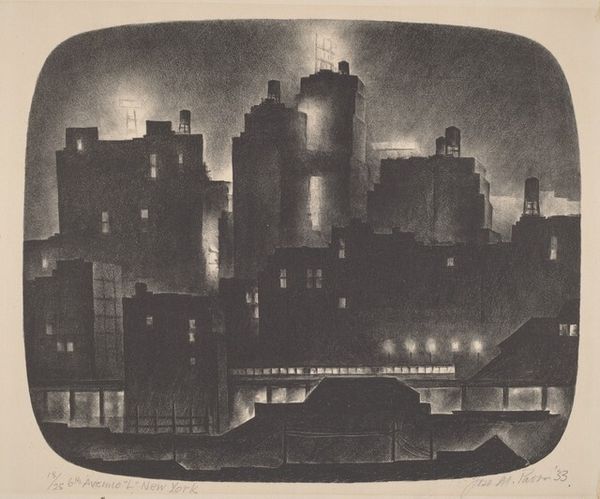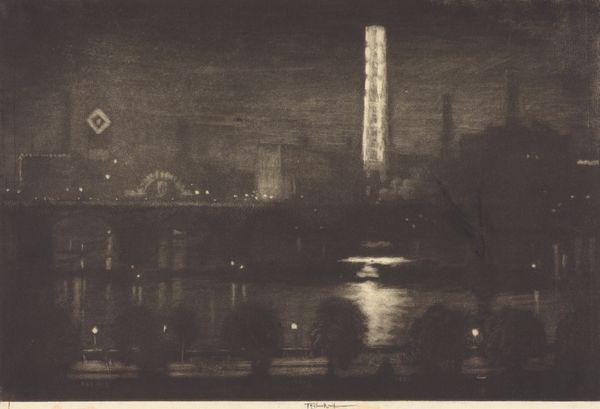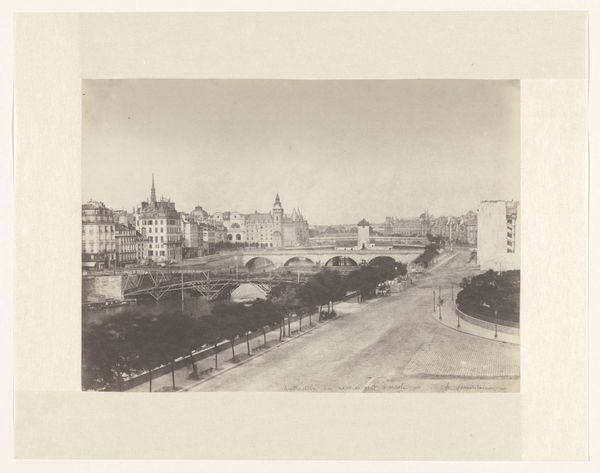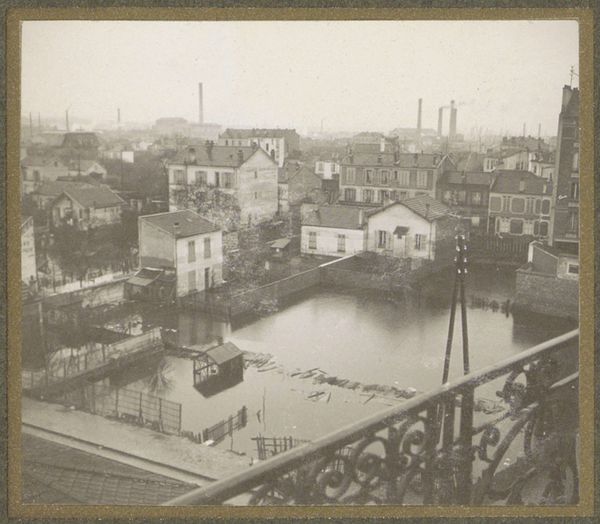
photogravure
#
excavation photography
#
film photography
#
photogravure
#
photo restoration
#
outdoor photograph
#
outdoor photo
#
archive photography
#
monochrome photography
#
united-states
#
outdoor activity
#
celebration photography
#
shadow overcast
Dimensions: 6 5/16 x 8 3/16 in. (16.03 x 20.8 cm) (image)
Copyright: No Copyright - United States
"The Bridge" is a photogravure, likely made by John Francis Strauss in the early 20th century. This process combines photography with traditional printmaking. A photographic image is transferred onto a copper plate, which is then etched. The plate is inked and used to create prints. The photogravure process was favored for its ability to produce continuous tones and fine details, allowing for atmospheric effects. In "The Bridge," this is evident in the velvety blacks and subtle gradations of light that capture the nocturnal cityscape. The process demanded skilled labor to transfer the photographic image onto the plate, etch it precisely, and then print it. Each stage required time and expertise. Photogravure occupied a unique space between mass production and individualized craft. While it allowed for the reproduction of images, the handmade aspect of the process meant that each print possessed subtle variations. Strauss's choice of photogravure elevates photography to the status of fine art, challenging the rigid distinction between art and craft. The process itself, with its blend of technology and handwork, mirrors the bridge it depicts – a symbol of industrial progress achieved through human ingenuity.
Comments
No comments
Be the first to comment and join the conversation on the ultimate creative platform.
